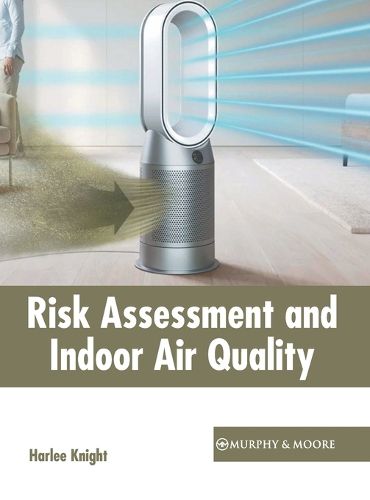Readings Newsletter
Become a Readings Member to make your shopping experience even easier.
Sign in or sign up for free!
You’re not far away from qualifying for FREE standard shipping within Australia
You’ve qualified for FREE standard shipping within Australia
The cart is loading…






Indoor air quality (IAQ) refers to the quality of air inside a school, house, office, or any other building environment. Poor IAQ has been associated with decreased productivity, sick building syndrome, and poor learning in schools. Nausea, sinus congestion, shortness of breath, headache and other symptoms are associated with poor IAQ. Indoor air pollution can cause a variety of health problems, including heart diseases, cancer, respiratory diseases and cognitive deficits. Risk assessment with respect to the IAQ involves the application of the tools and methodologies of risk assessment to the study of indoor air quality. The goal of an IAQ risk assessment is to detect problems with air quality in facility areas and develop long-term solutions to improve the safety and health of building occupants. It involves collecting samples from air and from building surfaces, studying the airflow, and determining the human exposure to pollutants. The main techniques for enhancing IAQ in the buildings include using air filters, eliminating or controlling the source of pollution, and using ventilation to dilute pollutants. This book contains some path-breaking studies on indoor air quality and its risk assessment. It will help the readers in keeping pace with the rapid changes in this field of study.
$9.00 standard shipping within Australia
FREE standard shipping within Australia for orders over $100.00
Express & International shipping calculated at checkout
Indoor air quality (IAQ) refers to the quality of air inside a school, house, office, or any other building environment. Poor IAQ has been associated with decreased productivity, sick building syndrome, and poor learning in schools. Nausea, sinus congestion, shortness of breath, headache and other symptoms are associated with poor IAQ. Indoor air pollution can cause a variety of health problems, including heart diseases, cancer, respiratory diseases and cognitive deficits. Risk assessment with respect to the IAQ involves the application of the tools and methodologies of risk assessment to the study of indoor air quality. The goal of an IAQ risk assessment is to detect problems with air quality in facility areas and develop long-term solutions to improve the safety and health of building occupants. It involves collecting samples from air and from building surfaces, studying the airflow, and determining the human exposure to pollutants. The main techniques for enhancing IAQ in the buildings include using air filters, eliminating or controlling the source of pollution, and using ventilation to dilute pollutants. This book contains some path-breaking studies on indoor air quality and its risk assessment. It will help the readers in keeping pace with the rapid changes in this field of study.